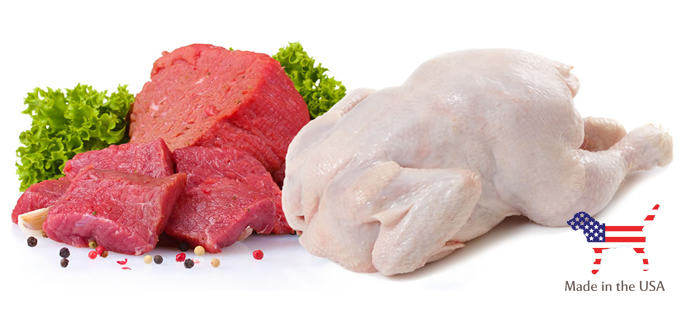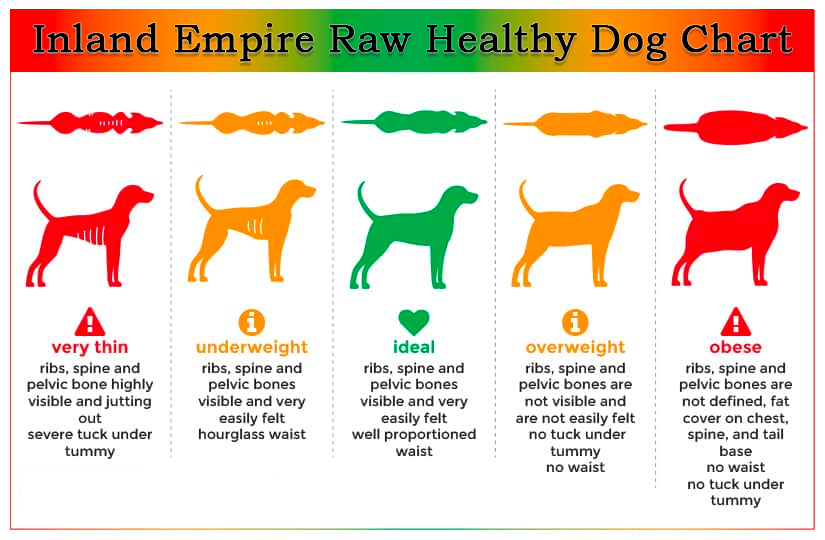Inland Empire Raw is pleased to now be offering K-9 Kraving’s superior raw products to the Inland Northwest. Like any responsible pet owner, you are probably wondering what exactly goes into making the food that you will eventually feed your dog. It is an extreme rarity in the pet food industry that the end user can take a look into … Read More
The Dangers of Supermarket Pet Foods
High quality pet food is designed to boost your pet’s immune system and sustain healthy levels of nutrients your dog needs to grow. Supermarket pet foods have a tendency to be filled with “fluffer” ingredients that won’t do much for your dog’s health. It’s the equivalent of feeding your child fast food every day instead of fruits and vegetables. Without … Read More
What’s Really In Pet Food (Part 2)
Although the purchase price of pet food does not always determine whether a pet food is good or bad, the price is often a good indicator of quality. It would be impossible for a company that sells a generic brand of dog food at $9.95 for a 40-lb. bag to use quality protein and grain in its food. The cost … Read More
What’s Really In Pet Food (Part 3)
You may have noticed a unique, pungent odor when you open a new bag of pet food — what is the source of that delightful smell? It is most often rendered animal fat, restaurant grease, or other oils too rancid or deemed inedible for humans. Restaurant grease has become a major component of feed grade animal fat over the last … Read More
What’s Really In Pet Food (Part 4)
Many chemicals are added to commercial pet foods to improve the taste, stability, characteristics, or appearance of the food. Additives provide no nutritional value. Additives include emulsifiers to prevent water and fat from separating, antioxidants to prevent fat from turning rancid, and artificial colors and flavors to make the product more attractive to consumers and more palatable to their companion … Read More
What’s Really In Pet Food (Part 5)
How Pet Food Is Made Although feeding trials are no longer required for a food to meet the requirements for labeling a food “complete and balanced,” most manufacturers perform palatability studies when developing a new pet food. One set of animals is fed a new food while a “control” group is fed a current formula. The total volume eaten is … Read More
What’s Really In Pet Food (Part 6)
Dr. Randy L. Wysong is a veterinarian and produces his own line of pet foods. A long-time critic of pet food industry practices, he said, “Processing is the wild card in nutritional value that is, by and large, simply ignored. Heating, cooking, rendering, freezing, dehydrating, canning, extruding, pelleting, baking, and so forth, are so commonplace that they are simply thought … Read More
What’s Really In Pet Food (Part 7)
The National Research Council (NRC) of the Academy of Sciences set the nutritional standards for pet food that were used by the pet food industry until the late 1980s. The NRC standards, which still exist and are being revised as of 2001, were based on purified diets, and required feeding trials for pet foods claimed to be “complete” and “balanced.” … Read More
What’s Really in Pet Food
Plump whole chickens, choice cuts of beef, fresh grains, and all the wholesome nutrition your dog or cat will ever need. When it comes to pet food ingredients, do you know what’s really in pet food? These are the images pet food manufacturers promulgate through the media and advertising. This is what the $11 billion per year U.S. pet food industry wants … Read More
Fighting Dog Obesity
Why is your dog overweight? This is the question you need to ask yourself when trying to combat dog obesity. Is this a bad reaction to a medication? Is it a lack of activity? Improper dieting? Think about all of the reasons why your dog may be overweight, and then tackle each of them individually. Rather than eyeing how much … Read More




